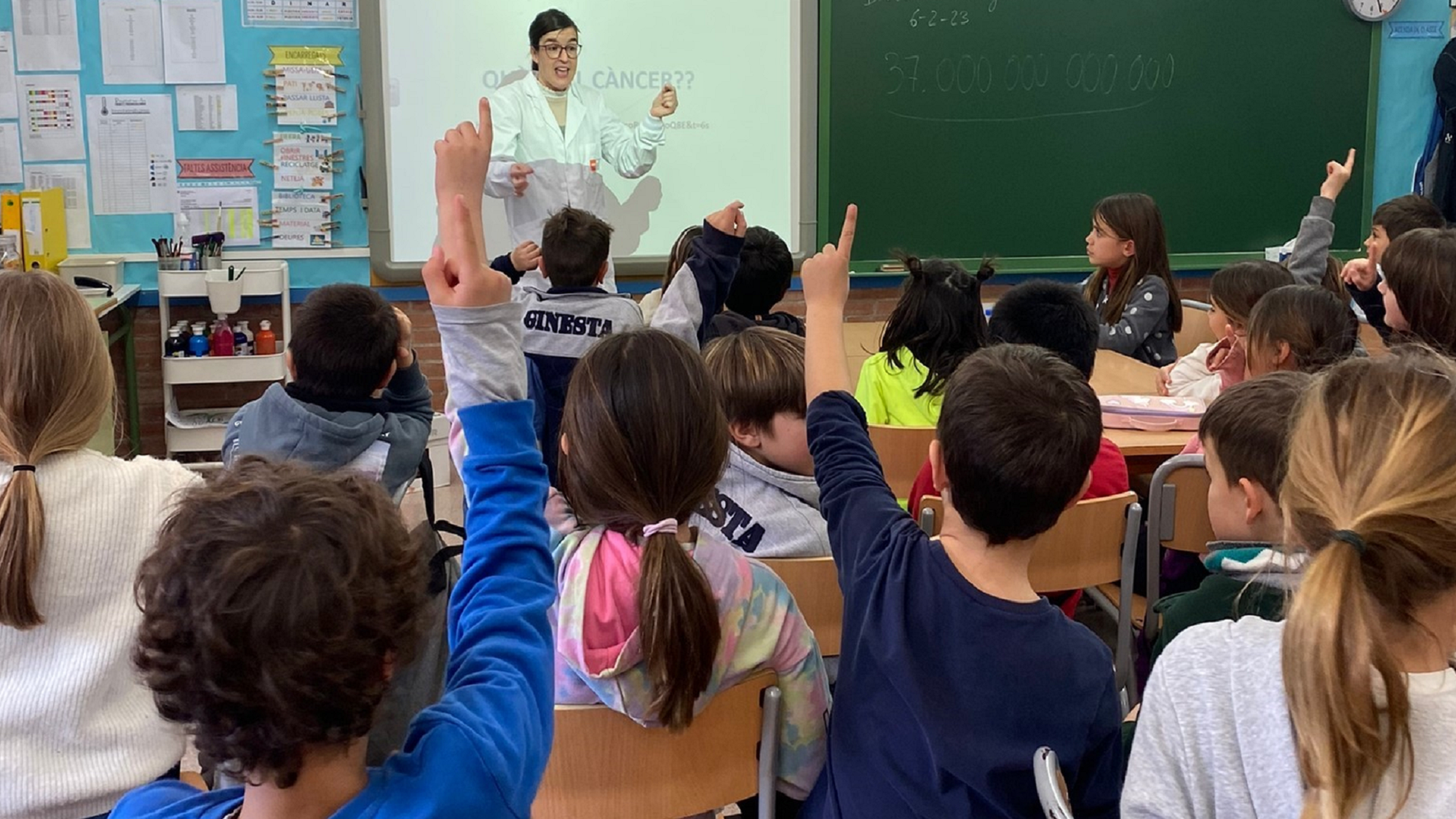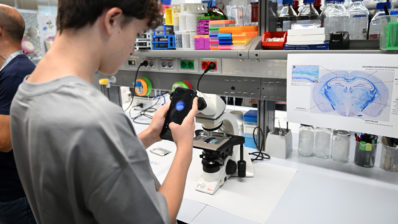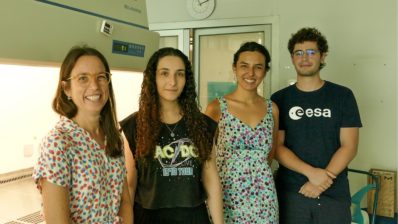To commemorate the International Day of Women and Girls in Science, more than 40 researchers from the centres of the Barcelona Biomedical Research Park (PRBB) visited 16 schools throughout Catalonia.
Almost a thousand children from 1st to 5th grade of primary school were able to listen to the researchers in person, reflect with them on what science is, why it is done, how it is done and who does it. They even did some small experiments, such as isolating DNA from bananas, or doing a chromatography to separate colours, which encouraged the students. “Once we finished the experiment of extracting DNA from a banana, many wanted to experiment themselves by mixing the two phases, trying to take the DNA with a spoon, adding more alcohol… Very interesting questions came up!”, explains Mireia Rumbo, researcher at the UPF.
The participating schools were:
- Escola Badalona Port (Badalona)
- Sant Gregori (Barcelona)
- Escola La Vall del Terri (Cornellà del Terri, Girona)
- Els Xiprers (Barcelona)
- Escola Finestres Mieres (rural school in La Garrotxa)
- Paco Candel School (L’Hospitalet de Llobregat)
- Ferran Sunyer School (Barcelona)
- La Salle Comtal (Barcelona)
- Escola Pia (Granollers)
- Escola Pràctiques (Barcelona)
- Escola Ginesta (Matadepera)
- IEA Oriol Martorell (Barcelona)
- Sagrada Familia (Sabadell)
- Escola Pere Virgili (Vilallonga del Camp)
- Ateneu Igualadí (Igualada)
- Escola Ítaca (Barcelona)
- La Mar Bella (Barcelona)
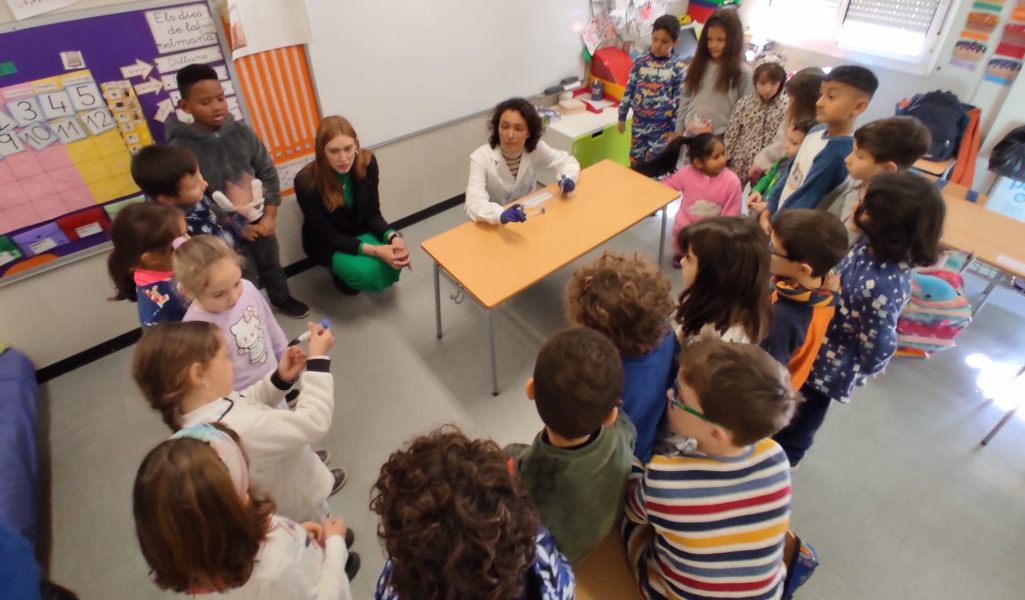
Before the talks, the children were asked to draw and explain what they knew about science. The idea was to see what their vision was, both of what science is and of who does it, in the case where they drew people.
Over the past few decades, there has been ample evidence that from an early age, children begin to show biased ideas about what activities each gender ‘should do’. This is why it is important for women scientists to go to schools so that girls can see real role models.
Many of the drawings we collected in these schools actually showed female scientists, and some of the children even knew the story of Marie Curie, or how for many years women were not allowed to study at university. They were also explained how this is still the case in some places, or it has been the case for much longer for women from minorities. Also, there are some fields, such as engineering, technology or computer science, where women still need to be given much more visibility.
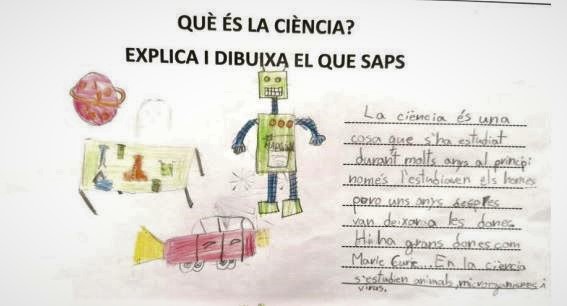
The researchers and children reflected together on important aspects of science such as experimentation with animals and why they are used, teamwork, different points of view, the importance of collecting data and evidence, and all that is needed to do research, beyond intelligence: curiosity, creativity, patience and resilience, desire to learn,…
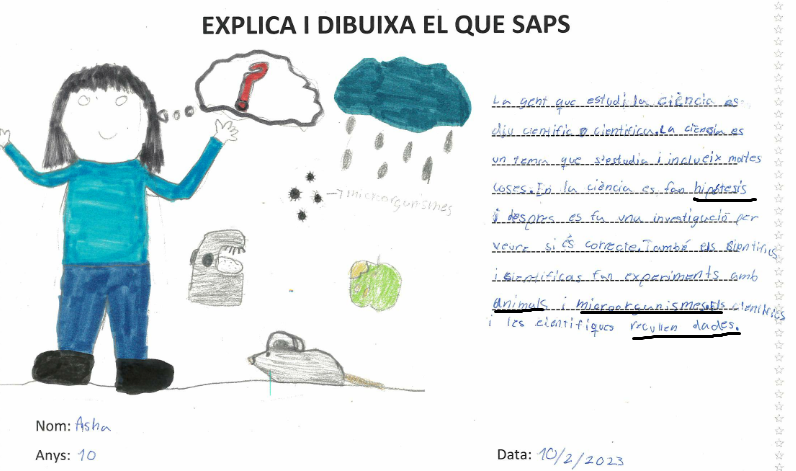
While I was explaining that everyone could be a scientist, men or women, a boy in 1st grade raised his hand and said to me: and those who are not men nor women too, right? It was a great moment! It seems that we are on the right track!
Violeta Beltran (EMBL Barcelona)
Imagining science
Erlenmeyer tubes filled with coloured liquids and explosions are synonymous with science for the little ones. As they grow up, they incorporate ideas and concepts such as ‘hypothesis‘ or ‘scientific demonstration’. In these talks, they were also made to understand that science can be done in many different places (not just laboratories) and in many different ways.
But they are all clear that science is about ‘discovering new things‘ and ‘learning things we don’t know, in order to improve‘.
It is also interesting to see how many of the children’s drawings and texts this year mentioned viruses and vaccines – no doubt an effect of the Covid pandemic.
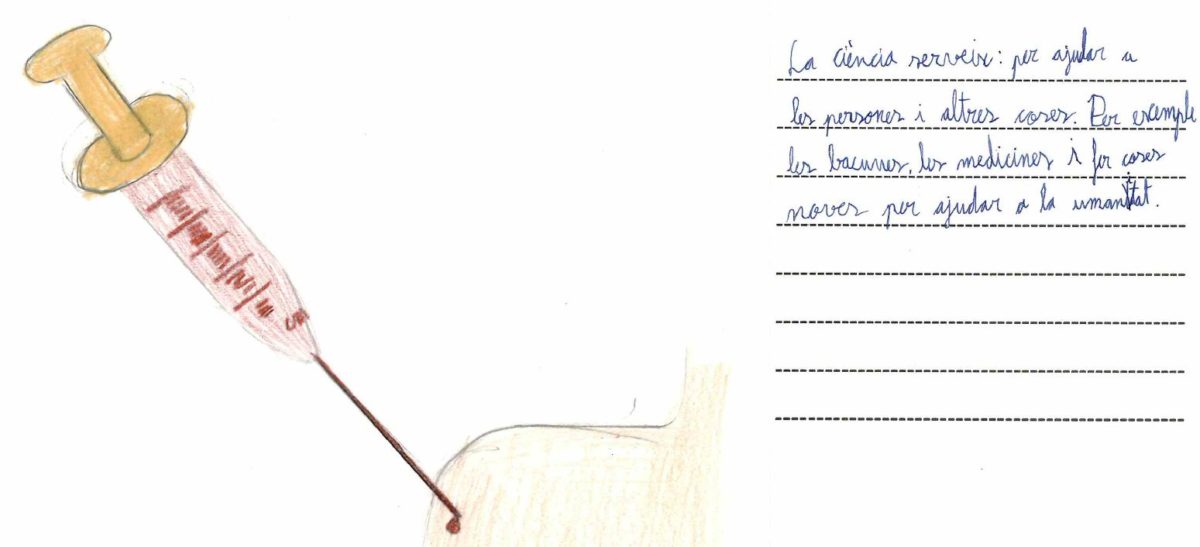
“Science is a bit dangerous and strange”
Marc, 8 years old
“Science has no limits – new things can be discovered every day!
Mar, 10 years old
Wikipedia
To commemorate 11th February, a women and science wikimarathon was also held. In total, about fifteen wikipedia pages were created or edited with biographies of women scientists, from the virologist Juana Díez, currently a researcher at the Department of Medicine and Life Sciences, Pompeu Fabra University (MELIS-UPF), to Pierina Scaramella, a “19th century Italian Jewish botanist, removed from teaching and research by the racial laws of Italian fascism”.


